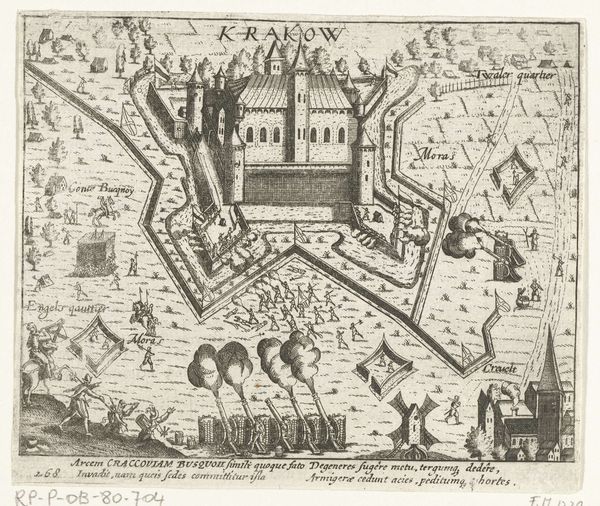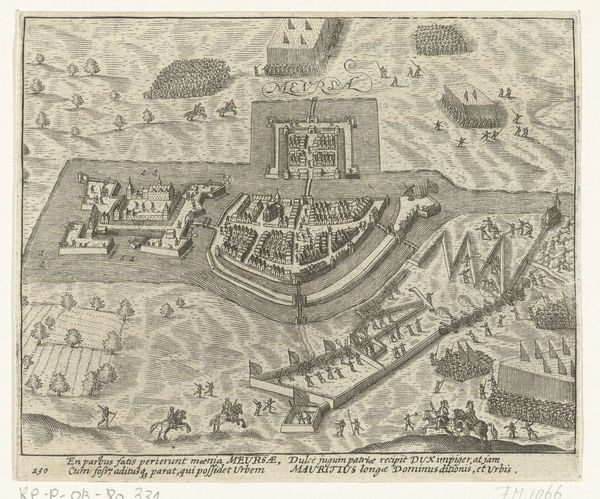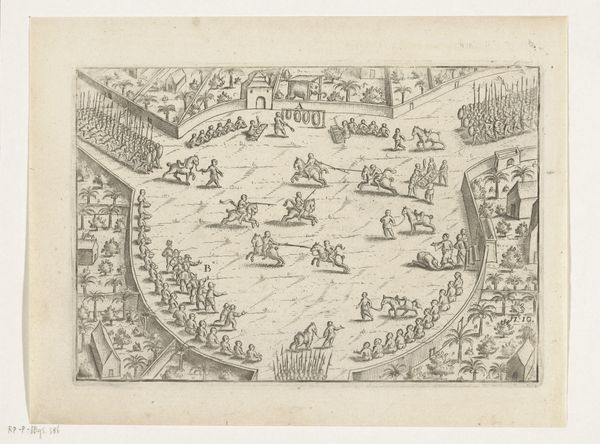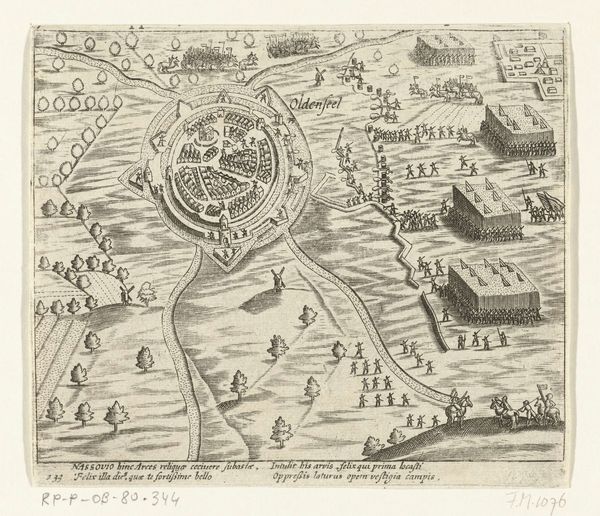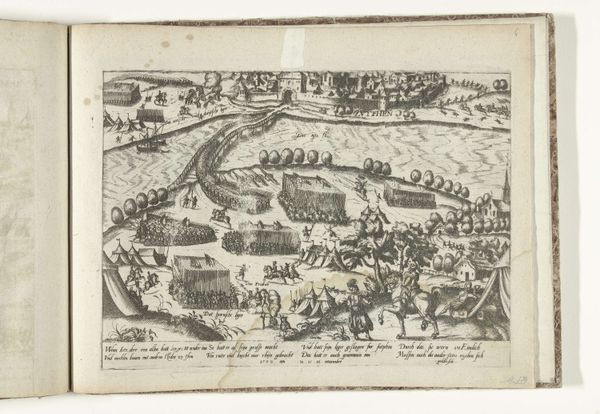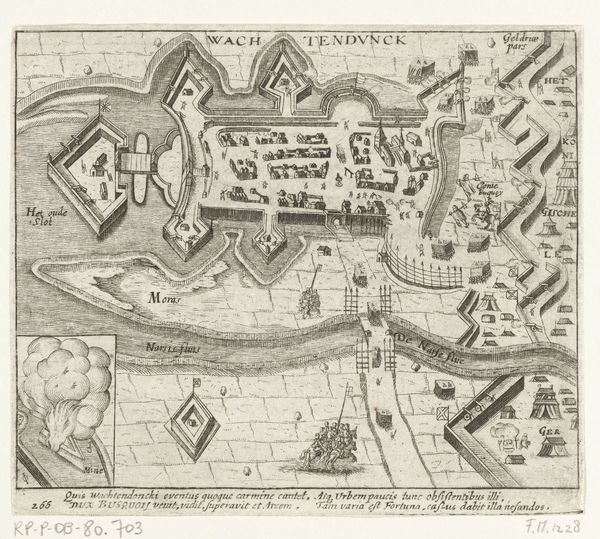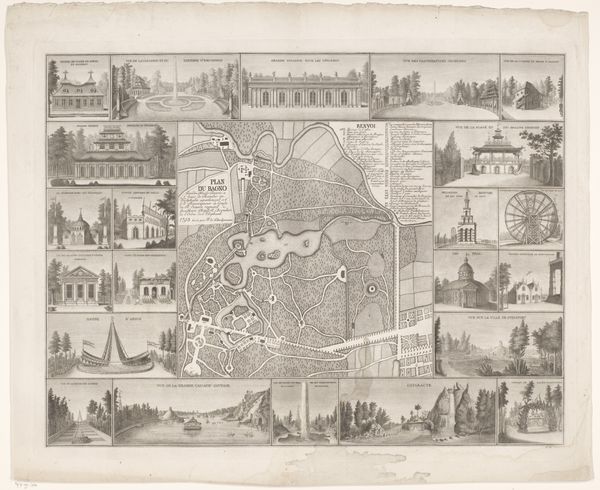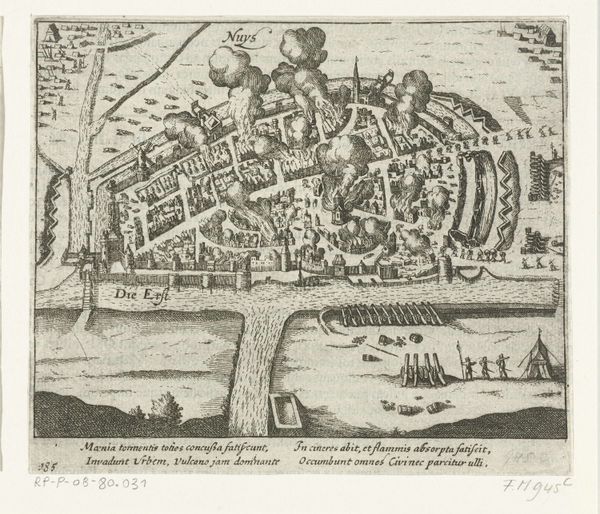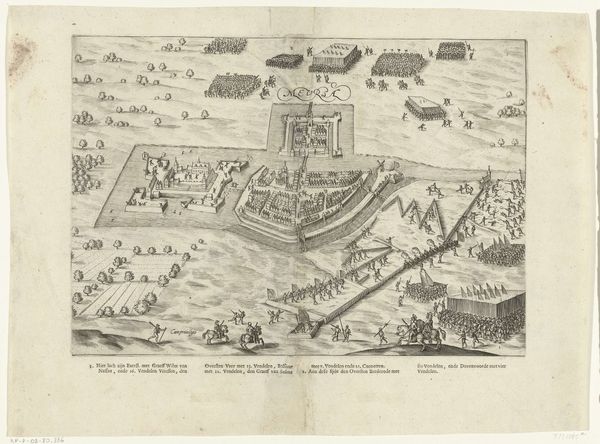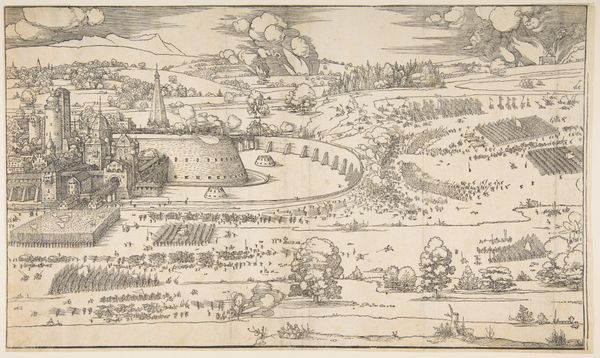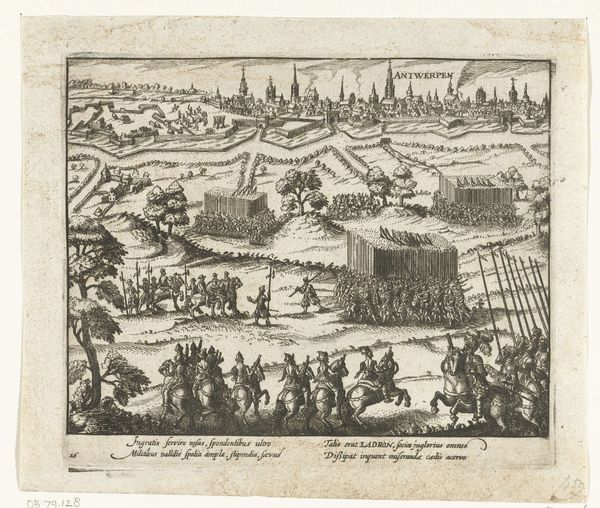
drawing, print, ink, engraving
#
drawing
# print
#
landscape
#
perspective
#
ink
#
cityscape
#
northern-renaissance
#
engraving
Dimensions: height 288 mm, width 175 mm
Copyright: Rijks Museum: Open Domain
Curator: Welcome. We're standing before an intriguing work: an anonymous engraving, rendered in ink, offering a "View of the Church of Eik en Duinen, 1556," created sometime between 1730 and 1736. Editor: Whoa, that's quite a history for an image! Immediately, I’m drawn to how meticulously detailed it is. I mean, every tiny tree looks like it's having a little existential crisis, which, relatable. It's both calming and somehow…off. Like a diorama after the apocalypse. Curator: The perspective employed situates this work within broader artistic conversations around space and representation, particularly during the Northern Renaissance. It engages with the social construction of landscape and the way power dynamics shape our view of the world. It reflects both idealized forms but also contains the early beginnings of a new social structure. Editor: You know, I see that social power reflected in how everything revolves, quite literally, around the church. That church spire looms and casts a long shadow… metaphorical or otherwise, of course! Makes you wonder about the unseen narratives playing out among the villagers sketched there so small. I almost get a "Sim City" vibe, you know? Except… Renaissance. Curator: That observation underscores how seemingly innocuous landscape art is rarely neutral. Its depiction naturalizes societal structures and establishes a spatial hierarchy, implicitly or explicitly reinforcing political ideologies. It reminds me of Foucault's theories on the gaze, and the way architecture influences individual behavior and thought. Editor: Oh, totally! It's like, "Big Brother is watching, but make it pastoral." Though I also wonder if, in its very formal depiction, is there a silent subversion? By placing it all on view this artist is almost creating a mirror… a map… allowing us to see their place, or their captor, from a distance, outside ourselves. That perspective from the top shifts how the church affects things here. Curator: Your insight there touches on critical readings of art history and representation theory, highlighting its cultural function in shaping historical memory and consciousness. It’s not just a scene, it's an intersection of history, religion, and social control presented through precise rendering of architectural details. Editor: Makes you think about what stories remain buried under all those perfectly sketched trees. Curator: Indeed. It urges a deeper questioning of seemingly idyllic scenes from our past and their impact in forming current power structures. Editor: Right, and maybe a desire for more trees, in general, if they keep everything else in balance. Thanks for the history trip! Curator: My pleasure. The artwork provides, in essence, an arena for contemplation and critical exploration of our relationship to the world around us.
Comments
No comments
Be the first to comment and join the conversation on the ultimate creative platform.

